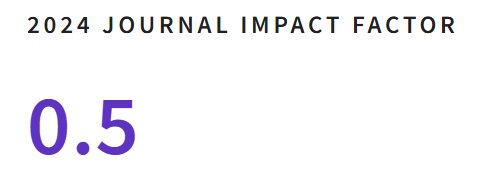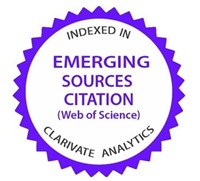Quality Perception and Purchasing Decision for Coahuila Wines Brand
DOI:
https://doi.org/10.35588/dwebnt44Keywords:
consumer, origin brand, structural equation, industry, viticultureAbstract
The article analyzes how the perception of quality of the brand Coahuila Wines influences the purchase intention and sense of belonging of local consumers in Saltillo. Using a Structural Equation Model (SEM) approach with data from 168 respondents, it was found that socioeconomic level has a moderate influence, while factors such as hedonism and personality strongly impact quality perception. In addition, the intrinsic and extrinsic attributes of wine strengthen brand appreciation, increasing both the purchase intention and the sense of belonging to the brand.
Downloads
References
Asencios González, Z.B. (2019). Influencia de la violencia contra las mujeres en la productividad laboral de microempresas utilizando Ecuaciones Estructurales con mínimos cuadrados parciales. Universidad Nacional Agraria La Molina.
Cox, D. (2009). Predicting Consumption, Wine Involvement and Perceived Quality of Australian Red Wine. Journal of Wine Research, 20(3), 209-229. DOI https://doi.org/10.1080/09571260903450963
González-Rodríguez, M.R., Estévez-Pérez, J. y Rodríguez-Díaz, M. (2021). Exploring the Influence of Wine Knowledge on the Evaluation of Intrinsic and Extrinsic Wine Attributes: An Empirical Study. International Journal of Hospitality Management, 95.
Haines, G.H. (1970). The Theory of Buyer Behavior. Journal of the American Statistical Association, 65(331), 1406-1407. DOI https://doi.org/10.2307/2284311
Hair, J.F., Hult, G., Ringle, C., Sarstedt, M. y Gudergan, S. (2018). Advanced Issues in Partial Least Squares Structural Equation Modeling. SAGE.
Hair, J.F., Sarstedt, M., Ringle, C.M. y Mena, J.A. (2012). An Assessment of the Use of Partial Least Squares Structural Equation Modeling in Marketing Research. Journal of the Academy of Marketing Science, 40(3), 414-433. DOI https://doi.org/10.1007/s11747-011-0261-6
Henseler, J., Ringle, C.M. y Sinkovics, R.R. (2009). The Use of Partial Least Squares Path Modeling in International Marketing. Advances in International Marketing, 20, 277-319. DOI https://doi.org/10.1108/S1474-7979(2009)0000020014
Howard, J.A. y Sheth, J.N. (1969). The Theory of Buyer Behavior. John Wiley & Sons.
ICEX (2022). El mercado del vino en México. ICEX España Exportación e Inversiones. http://mexico.oficinascomerciales.es.
Ion, R.A., Boboc, D. y Turek Rahoveanu, A. (2011). Protection of Wine by Controlled Appelation of Origin and Geographical Indications. Quality Access to Success, 12(1), 242-244.
Lennox, R.D. y Wolfe, R.N. (1984). Revision of the Self-Monitoring Scale. Journal of Personality and Social Psychology, 46(6), 1349-1364. DOI https://doi.org/10.1037/0022-3514.46.6.1349
Marco-Lajara, B., Seva-Larrosa, P., Martínez-Falcó, J. y García-Lillo, F. (2022). Wine Clusters and Protected Designations of Origin (PDOs) in Spain: An Exploratory Analysis. Journal of Wine Research, 33(3), 146-167. DOI https://doi.org/10.1080/09571264.2022.2110051
Nathon, N. (2019). The Protection of Geographical Indications for Agricultural Products in the European Union. En Mira T. Sundara Rajan (Ed.), Cambridge Handbook of Intellectual Property in Central and Eastern Europe (pp. 349-364). Cambridge. DOI https://doi.org/10.1017/9781316661253.019
Norabuena, C., Huamán, A. y Ramirez, E. (2021). Modelo de ecuaciones estructurales (con estimación PLS) basado en calidad de servicio y lealtad del cliente de las cajas rurales peruanas. Ciencias Administrativas, 18, 3-14. DOI https://doi.org/10.24215/23143738e081
Pérez-Villarreal, H.H. (2018). Análisis de la percepción de calidad de consumo de vinos mediante una aplicación de segmentación de mercados en Puebla, México. Repositorio de la Red Internacional de Investigadores en Competitividad, 12, 1-19.
Salamanca Castro, A.B. y Crespo Blanco, C.M. (2007). El muestreo en la investigación cualitativa. Nure Investigación, 27, 1-4.
Scozzafava, G., Gerini, F., Dominici, A., Contini, C. y Casini, L. (2018). Reach for the Stars: The Impact on Consumer Preferences of Introducing a New Top-Tier Typology into a PDO Wine. Wine Economics and Policy, 7(2), 140-152. https://doi.org/10.1016/j.wep.2018.09.001
SmartPLS. (2022). SmartPLS 4. SmartPLS. https://www.smartpls.com/.
Steenkamp, J.B.E.M. (1989). Product Quality: An Investigation into the Concept and How it is Perceived by Consumers. Agricultural University.
Verdú Jover, A.J., Lloréns Montes, F.J. y Fuentes Fuentes, M. (2004). Measuring Perceptions of Quality in Food Products: The Case of Red Wine. Food Quality and Preference, 15(5), 453-469. https://doi.org/10.1016/j.foodqual.2003.08.002
Wakefield, K.L. y Inman, J.J. (2003). Situational Price Sensitivity: The Role of Consumption Occasion, Social Context and Income. Journal of Retailing, 79(4), 199-212. https://doi.org/10.1016/j.jretai.2003.09.004
Zamora, J. y Castillo, P. (2022). The Impact of Brand and Geographical Indication on Wine Quality Perception in Emerging Markets. Journal of Wine Research, 33(2), 145-159.
Downloads
Submitted
2024-11-19Published
Issue
Section
License
Copyright (c) 2025 RIVAR

This work is licensed under a Creative Commons Attribution 4.0 International License.









